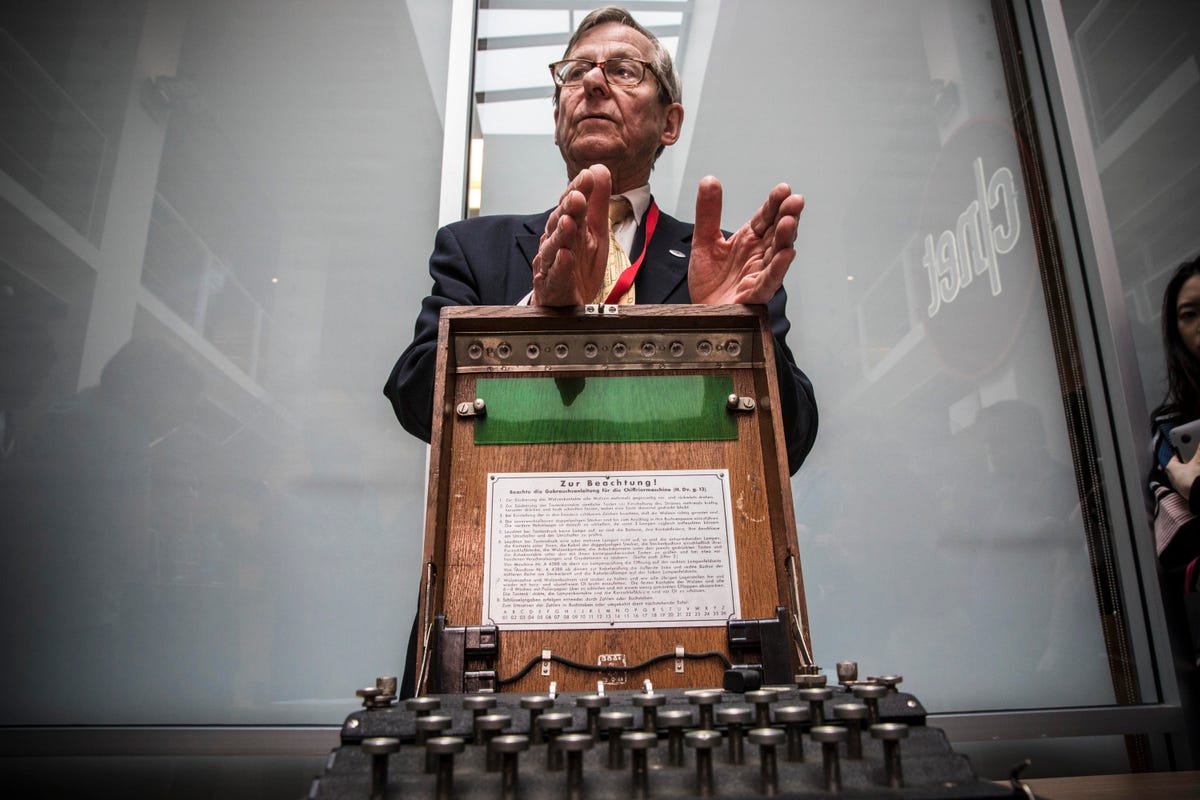
The Enigma machine created encryption so advanced that humans needed machines to break it.
Mark Baldwin demonstrates the Enigma cipher machine, which he says "just changes one letter into another." The way it does that is much more complicated than you might imagine.
Press one key on the stripped-down keyboard and a different letter lights up in the lampboard, an array of light-up letters arranged just above the keyboard.
Users would type their messages into the machine and write down each replacement letter as it lit up.
Looking at the machine, it's hard to believe it confounded some of the world's best technical experts, who spent years at places like the UK's secret codebreaking compound at Bletchley Park coming up with ways to crack it.
The Nazi cipher machine, Enigma, used in World War II to encrypt messages sent over wireless radio by the German military.
The Enigma is even older than World War II. One hundred years ago this week, Baldwin told us, German inventor Arthur Scherbius took out a patent for the Enigma machine.
The machine's innards created an exponentially eye-popping number of possible solutions to a given cipher. The number of possible solutions would take a whole paragraph to write out fully, but can be expressed as about 3.3 x 10^114.
Enigma enthusiast Ralph Simpson told CNET that if you gave 100,000 operators each their own Enigma machine, and they spent 24 hours a day, seven days a week testing a new setting every second, "it would take twice the age of the universe to break the code" by hand.
The power of this machine prompted the Allied forces to launch an intense effort using mathematicians sworn to secrecy and some Naval derring-do to crack the code and read Germany's messages.
The Enigma accomplishes its complexity with three rotors and a plugboard.
Enigma isn't a computer. Expert Mark Baldwin demonstrated to a crowd of employees at CBS Interactive, CNET's parent company, how the machine simply "changes one letter into another."
Before being cracked, Germany's lethal U-boats the power of Enigma to communicate with each other about attacks on merchant ships, which devastated the UK throughout the war, taking thousands of lives and cutting off vital supplies and troops en route from North America.

